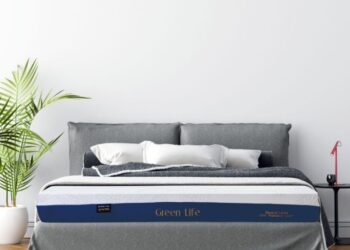On paper, though, the Selfie seems like a great addition to Asus’ impressive ZenFone range, and its focus on photos is appealing, especially the front camera’s wide-angle lens and f/2.2 aperture. While it isn’t the widest for smartphone cameras, it should be good enough for brighter pictures, especially in low-light situations. The Selfie boasts a laser autofocus for its rear-camera as well, and has great call quality.
There’s really nothing quite like this phone in the market at the moment that takes such high-resolution selfies, but that’s beginning to change. Oppo comes close with the N3, whose swiveling 13-megapixel camera is a rear camera that doubled to take selfies. If selfies aren’t your priority, I daresay there are other, better devices such as Xiaomi’s Mi 4i or the Alcatel OneTouch Idol 3 that offer better performance and build quality.
Pricewise, the ZenFone Selfie is set to hit markets in Asia such as Singapore and Thailand for around S$399 – this converts to approximately $285 USD, £180 and AU$395, which isn’t far off the ZenFone 2’s US price. Asus has no plans for western markets just yet, so the selfie-loving side of you will either have to wait, or get it through a third-party online retailer.
Design
- 5.5-inch, 1,920×1,080-pixel IPS (403ppi)
- 6.16 x 3.04 x 0.43 inches (156.5 x 77.2 x 10.8mm)
- 6 ounces (170g)
The Selfie is almost identical in size to the ZenFone 2, being just slightly wider and thinner. Both phones weigh the same and have a large 5.5-inch full-HD displays. You’d be hard-pressed to differentiate the two, if it weren’t for the high-resolution 13-megapixel front-facing camera sitting just right above the display.
It looks odd – the large size of the lens doesn’t sit well when compared to the cleaner looks of modern phones, and it doesn’t help that it’s flanked by a dual-LED flash and the audio speaker. It takes up quite a bit of the space on the front – I was initially worried about dirt on the lens from resting against my face while making calls, but Asus seems to have taken this into consideration and the camera is slightly recessed. It won’t touch your skin when you put the phone to your ear.
The large camera there also has the effect of removing the Asus logo from the phone’s front, a surprising design change given that most Android manufacturers love plastering their logos across the faces of their phones. Instead, the only way you’ll know this is an Asus phone is by looking at the back.
Now, the Selfie is clad in plastic, and unlike the brushed-metal look of the ZenFone 2, the Selfie uses a smooth, matte plastic finish. I’m a big fan of this as it makes fingerprints are harder to see, and it’s quite comfortable to hold. My review unit came in white, but if you don’t like that, you can choose another color such as pink or blue, which come bearing fashionable names such as “chic pink” or “aqua blue.”
Underneath the 5.5-inch display are the touch-sensitive menu buttons, and below that is the subtle concentric circle pattern that Asus has been using as its signature design. It’s clearly visible when the light hits the phone at an angle, though the effect ends up looking like spikes radiating inwards towards the home button.
The one thing that irks me most about the phone’s design, however, has to be the location of the power button. Asus has placed it right at the top, which makes no sense to me given the size of the phone. I hated having to stretch my fingers to reach the top. The company has already placed the volume controls below below the rear camera on the back of the phone, much like LG’s G4, and placing the power button there – again, like the G4 – would surely make a lot more sense as well.
Underneath the rear cover, you get access to the removable 3,000mAh battery as well as access to the dual-SIM card slots. A word of advice, if you’re using a SIM adapter: putting the SIM card in slot one makes it ridiculously difficult to remove. I spent close to 30 minutes trying to pry the card back out since the SIM slots are super-tight and aren’t spring-loaded. The microSD card slot is located right above the difficult-to-use slot one.
Hardware features
- 1.5GHz Qualcomm Snapdragon 615
- 16GB or 32GB of storage
- 3GB of RAM
- Expandable storage up to 64GB
- 3,000mAh removable battery
The Selfie is no slouch when it comes to its hardware. On paper, the Snapdragon 615 processor and ample 3GB of RAM should have been more than sufficient to keep the phone chugging along lag-free, but this wasn’t the case. The phone felt sluggish, and menu animations were sometimes slow, but the biggest problem I faced was when I was trying out the camera features.
Boasting a full-HD 5.5-inch display – that’s 1,920×1,080 pixels – the screen has pretty good viewing angles, and colors were bright and vibrant. The display also held up well under bright sunlight.
The phone also comes with either 16GB or 32GB of onboard storage. If that’s not enough, you can also get up to 64GB more through a microSD card. Both the rear and front 13-megapixel cameras have dual-LED flashes, and the rear shooter comes with laser-assist focus for better accuracy.
Those bemoaning the lack of removable batteries in modern-day smartphones will find the Selfie to be different – the 3,000mAh battery can be swapped, so if you’re worried about running out of power, just be sure to carry spares. (More on battery performance later.)
Software features
- Android 5.0 Lollipop
- Asus Zen UI
- Guest mode is great
The Asus Zen UI is well-polished and runs on Android Lollipop 5.0. The user interface features a flat minimalist look and comes with a whole suite of features – and that itself is an issue I have with the phone. While the look is minimalistic, Asus has basically packed the phone with nearly every feature it could. This wasn’t so much of an issue with the ZenFone 2 the first time around, but it seems a lot more annoying on the Selfie – and could be a cause of the performance issues I’ve been experiencing.
But let’s start with the good stuff first. If you don’t like the design of the user interface, the good news is that you can change it. Asus has included a Theme store, where you can download a look more to your liking. Other features such as Do It Later, a handy reminder app that helps you keep track of your SMSes to reply to, articles to read and missed calls. You can double-tap on the screen to wake the phone, or shake it to take a screenshot. There’s also a special guest mode that lets you pass your phone to a friend without letting them snoop at your private data.
While a power user will be delighted with the wide variety of features, new users will definitely have issues with the huge number of features built-in. Take for instance, the well-intentioned Auto-Start Manager app, which lets you select which apps to load into memory when you reboot the phone, allowing you to quickly use those apps without having to wait so long. Instead of hiding in the background and letting you control which to load, every time you download an app, a notification pops up and tells you an app has been added to Auto-Start Manager. It’s pointless – since the app mostly allows new apps to be on the auto-start list anyway – and it can confusing for a new user to figure out if they want the app to want to be on that list.
The phone also automatically categorizes apps that you’ve downloaded and sorts them into folders in the app drawer. While you do get a notification telling you where it’s gone, the alert can be easy to miss, leading you to wonder where the app went (especially if you’re used to normal Android).
While Asus has generally done a great job of adding its own touches to Android, my main criticism of the ZenFone 2 review still remains – it’s a Samsung-esque kitchen-sink approach, with too much bloat to really matter. With Samsung paring down this approach in its recent phones, it’s puzzling while Asus is cramming in so much for so little gain.
Camera
- 13-megapixel rear and front cameras
- 1,080p HD video
- Dual-LED flash on rear and front
- Laser-assist focus on rear
With the photos the main highlight of the ZenFone Selfie, Asus has put plenty of work into the camera features. The rear camera comes with the Asus signature Low Light mode that uses pixel binning technology – combining four pixels into one – for a smaller image output that’s capable of reading more light data for a better low-light shot. It’s a lot brighter, as you’ll see in my test image below. You can also take pictures with a simulated depth-of-field effect, but this mode is clunky to use, as it takes up to 5 seconds for the phone to render the effect when you’re adjusting the amount of blur in the background, making it a game of patience if you want to see how different each setting is.
For the front camera, the default mode is Beautification, which smooths out wrinkles and hides blemishes to help you look good. You can also increase the size of your eyes and thin your cheeks in real time to see how you look before you snap a shot. Other interesting modes include a Selfie Panorama, though I couldn’t seem to get it to work by myself – perhaps it needs more faces in the shot, but it would have been useful for capturing yourself with a scenic background.
Image quality seems to be great. You’ll have no issues taking pictures outdoors, but if you zoom in too close you’ll find that details can be a little bit fuzzy. Indoor photos were generally all right, though expect some noise to creep into your images, especially if lighting is poor.
If you’re shooting video with this phone, remember, you can do it with either the front or the rear camera, since both feature the same number of megapixels. Quality was generally good, and videos taken in the bright outdoors looked decent. The phone doesn’t really handle backlit scenarios well, but then again, neither do most phones.
While the Asus ZenFone 2 seemed to do well in our camera tests, I’m not too impressed with the Selfie. Indoor lighting is quite the mess, and I tested the camera twice to double-check my results since the first round seemed off. However, you should have no issues outdoors or in places where there’s bright light. Furthermore, the included software modes add a fair bit of functionality, though you’ll likely just stick it on Auto mode and the occasional HDR mode more often than not. Check out the test images below for our analysis.
Performance and battery life
The Qualcomm Snapdragon 615 is now an established midrange processor, and while the benchmark scores aren’t comparable to the high-end phones, the ZenFone Selfie doesn’t fare too well against similarly equipped phones either. Compared to say the Oppo R7, the scores are considerably lower, reflecting the performance I’ve been experiencing in day-to-day use.
I use Asphalt 8 as my go-to choice for games testing, and the ZenFone felt choppy – something I didn’t experience on the other Snapdragon 615-powered phones.
Benchmark tests comparison
Battery life
The 3,000mAh removable battery means as long as you have a charged spare on hand, you’ll never have to worry about your phone dying. I managed to get through a full day of heavy use, and on our CNET Labs Video Test the phone lasted a good 12 hours and 29 minutes, which mirrors my anecdotal usage. You won’t have to worry about running out of juice with this phone.
Call quality and data speeds
I found call quality to be very clear, even in noisy environments. Voices sounded crisp, and the volume was loud. You’ll be able to hear the phone ringing even if it’s in your pocket in noisy places, and the strong vibration means you’ll feel it buzzing even if you can’t hear it.
The phone supports mainly LTE networks in the UK, Asia and Australia – this means UK networks such as Three and EE are supported, while in Australia, Optus and Telstra users will have no problems with 4G on the phone. There’s no word yet on whether a US version will be made available, especially given that Asus has said there are no plans for the Selfie in the US. However, the phone will work on GSM networks, so you’ll still be able to use the phone on 3G in the US with compatible networks such as AT&T and T-Mobile.
I tested the 4G speeds on the SingTel network here in Singapore and found that it matches well within the range I get with other devices; around 90Mbps download and 45Mbps in uploads.
Conclusion
Given my experience with the Asus ZenFone Selfie, I’m still hesitant to recommend this phone unless you really love taking selfies or group pictures with the front camera. The phone has plenty of potential, but the software bloat and the sluggish performance leaves me somewhat cautious.
At its non-contract S$285-ish price, the ZenFone Selfie is around the average price for a midrange device, which doesn’t really help me to overlook its faults. However, I suspect these software issues can likely be fixed via an update. That said, it’s still not as expensive as Oppo’s R7 , which retails for around $400.
If you’re looking for something cheaper, there’s always the Xiaomi Mi 4i and its S$200 price tag, while the Alcatel OneTouch Idol 3 at S$250 isn’t too bad a deal as well. Lastly, do note that the phone isn’t available in western markets, but you can likely get one through third-party online retailers with an added premium.






